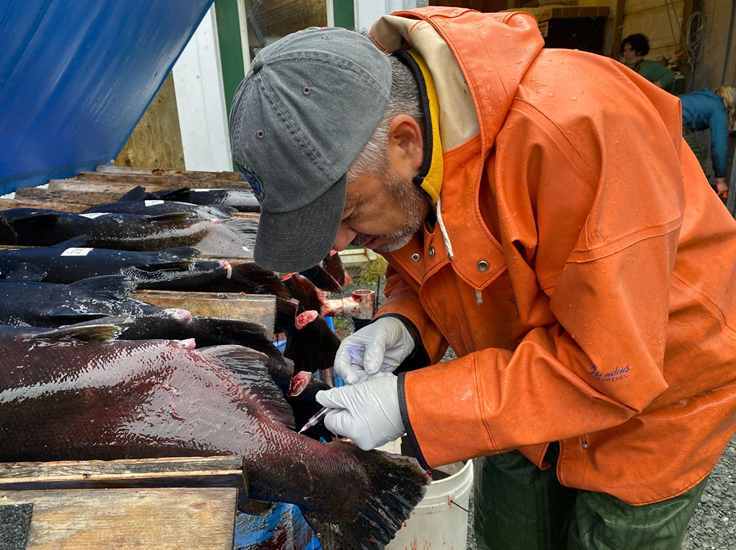Last month, NOAA researchers sampled salmon in southeast Alaska as part of an ongoing project to monitor per- and polyfluoroalkyl substances (PFAS) in the region’s fisheries. Known as “forever chemicals” because some are estimated to take over 1,000 years to decompose, PFAS have been linked to a wide range of health problems in people, including cancer, liver damage, and thyroid disease.

The team conducted a survey of Chinook salmon of various age classes at NOAA’s Little Port Walter Research Station, a remote site on Baranof Island with no known direct sources of PFAS contaminants.
The study aims to better understand how PFAS accumulates in various tissues of different species of salmon over time and across regions. Data collected will also help show how PFAS moves through the food web. Information gained from the study will inform the salmon management decisions of the North Pacific Fishery Management Council and other stakeholders in the Pacific Northwest.
PFAS are manufactured chemicals that have been used since the 1940s for industry and consumer products and coatings that repel oil, grease, water, and heat. Because of their widespread use and their persistence in the environment, many PFAS are found in the blood of people and animals all over the world.
The U.S. has already begun phasing out PFAS, with many states now banning their use and the federal government publishing legally enforceable standards to protect communities from exposure. Scientists are also addressing the problem by developing new technologies that can break down PFAS chemicals.
